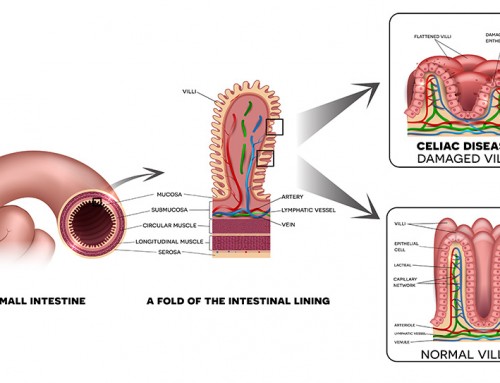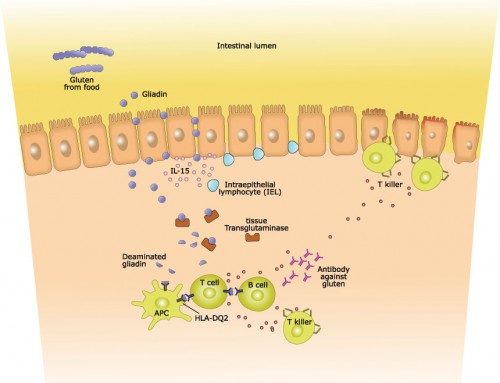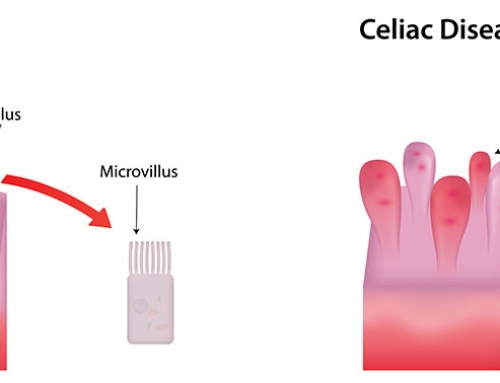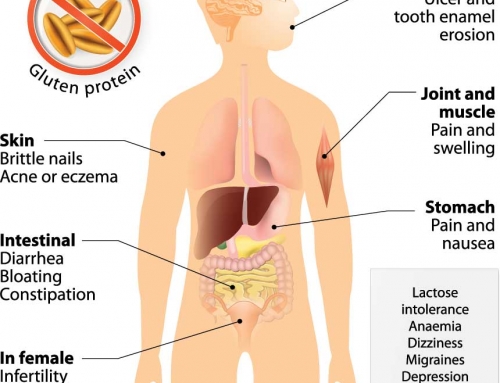What Is Celiac Disease?
Celiac disease is an autoimmune disorder caused by gluten intolerance, leading to inflammation and malabsorption.
In people with celiac disease, the immune system recognizes gluten as a harmful foreign substance and responds by triggering an immune response and inflammation. The inflammation resulting from gluten ingestion damages the intestinal villi and interferes with food absorption. Villi are small, finger-like projections lining the small intestines, which increase the intestinal lining surface area for increased nutrient absorption in the small intestines. Damaged villi decrease the ability to absorb nutrients such as protein, fat, iron, folate, calcium, and vitamin D in the body, leading to malnutrition and other complications. If celiac disease is detected and treated in time, most symptoms can be reversed, but it may still take months to years for the intestines to heal properly.
Celiac disease can vary in severity, and is dependent upon the associated risk factors, as well as quality and quantity of gluten exposure involved. Sometimes, celiac disease does not have any observable symptoms. However, people with asymptomatic celiac disease still have the antibodies in their blood, inflamed gastrointestinal tracts and decreased nutrient absorption.
In very rare cases, refractory celiac disease is present when symptoms of celiac disease cannot be improved with a gluten-free diet. This rare disorder can progress to refractory sprue, which is characterized by chronic inflammation of the intestinal tract, leading to interrupted nutrient absorption and increased risk of developing T-cell lymphoma.
There is also a similar condition called non-celiac gluten sensitivity. The signs and symptoms of non-celiac gluten sensitivity are similar to celiac disease, but individuals lack the antibodies and intestinal damage as observed in celiac disease.
References:
Ludvigsson JF, Leffler DA, Bai JC, Biagi F, Fasano A, Green PH, Hadjivassiliou M, Kaukinen K, Kelly CP, Leonard JN, Lundin KE, Murray JA, Sanders DS,Walker MM, Zingone F, Ciacci C (2013). The Oslo definitions for coeliac disease and related terms. Gut 62(1): 43-52.
Rubio-Tapia A, Murray JA (2007). The liver in celiac disease. Hepatology 56(5): 1650-1658.
DNA In the News2017-04-06T19:04:52+00:00






